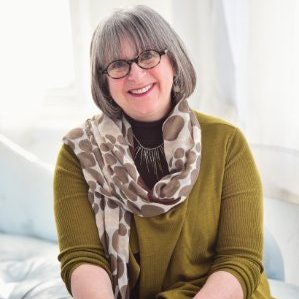I am currently the chief academic officer at a public technical college that is the post-secondary arm of our state’s largest school district. Our students come from over 100 countries and speak 76 languages. Many of our students have had interrupted formal education due to factors such as family commitments, the need to work, incarceration or moving internationally due to refugee status.
Dr. Karen Gross, the author of Breakaway Learners: Strategies for Post-Secondary Success with At-Risk Students, would say that I work with breakaway learners, who are non-traditional and often marginalized students whom our K-20 system wasn’t designed to support. What I see at my school and what is increasingly becoming the norm throughout higher education is that non-traditional students are here and most post-secondary institutions aren’t equipped to support them or meet them where they are.
 Dr. Karen Gross
Dr. Karen GrossIn the spring of 2017, postsecondary enrollment nationwide decreased 1.5 percent from the previous year. The demographics of students entering postsecondary programs are also changing. From the fall of 1976 to the fall of 2014, the percentage of students who are Hispanic, Asian/Pacific Islander, Black and American Indian/Alaskan Native have increased, and the percentage of White students fell from 84 percent to 58 percent. National trends forecast that minority high school students will become the majority by 2030. States in the Northeast and the Midwest are losing high school graduates, and in Southern and Western states, the number of Hispanic students is rising.
What does this mean for postsecondary institutions? Are our institutions of higher education prepared to support the racial and ethnic diversity and boost student success?
Gross says that monumental shifts are necessary in our country’s educational systems and calls for a different kind of engagement as schools try to adapt. Her book offers a concrete approach in addressing systemic and institutional inequities and in focusing on student success. Drawing on her own experiences as president of Southern Vermont College, which is a majority Pell-eligible student serving institution, as well as her own experiences as a breakaway learner, Gross provides a unique perspective on the experiences of these students as they move through the education system.
Gross coined the term “breakaway learners” to move away from more common terms, “vulnerable” and “at-risk,” which don’t adequately address these students’ strengths. Gross describes breakaway learners as students from both high and low socioeconomic status backgrounds, who have faced innumerable barriers to entering post-secondary systems of learning, including inadequate K-12 educations, dysfunctional or absent families and chronic stress and trauma. Gross asserts that the current education system is not prepared to recognize and embrace the experiences and creative problem-solving abilities that breakaway learners possess.
Gross explains that fewer than 40 percent of Pell-eligible students complete bachelor’s degrees within six years. Success for Pell-eligible students in two-year and certificate programs is even lower. However, Gross reminds us not to homogenize Pell-eligible students. Not all are 18-24; many are older. Some have served in the military. Not all are attending four-year residential colleges. Understanding these students as individuals, Gross proposes, is the only way to ensure their success.
When educators build relationships and trust through a reciprocal focus on both the institutions that serve breakaway learners and on the learners themselves, success becomes possible. At the core of this relationship is developing lasticity, which, Gross explains comprises “the remarkable capacities of breakaway students and the needed and oft-absent or unrecognized capacities of the institutions that serve them.” Lasticity isn’t grit, resilience or growth mindset. Instead, lasticity is a broader term that focuses on students’ successes, not deficiencies. Lasticity is the basis for a relationship between learners and educators. It is a way to examine practices, build relationships and support success.
At my commuter technical college in downtown Denver, we serve majority Pell-eligible students and strive for lasticity in all we do. Classes are in a cohort model and students form meaningful relationships with each other as well as with their instructors. This provides a support system to students within their classes and impacts our programs’ completion rates, which are currently at 88 percent across the school. We don’t offer any student loans, so all students graduate from our programs debt-free. When students cannot come to campus or attend classes, they can access school resources. Our school’s foundation maintains emergency 360-degree funds that are available to any student. To access these funds, students don’t fill out cumbersome financial aid applications. They merely state their need and are able to immediately access gift cards of up to $100, which can help pay for drop-in child care, transportation or even a parking ticket. This support enables them to persist and complete their education, allowing them to propel into careers. We see that what we are doing is working. In addition to high completion rates, 82 percent of our students find jobs within their fields upon graduation.
Throughout the book, Gross outlines concrete strategies for institutions to develop and foster lasticity. She provides roadmaps to develop policies and processes for institutions that are prepared to tap into often-ignored strengths that breakaway students hav
Linda Van Doren is the chief academic officer at Emily Griffith Technical College in Denver and a doctoral student at the University of Colorado Denver.















